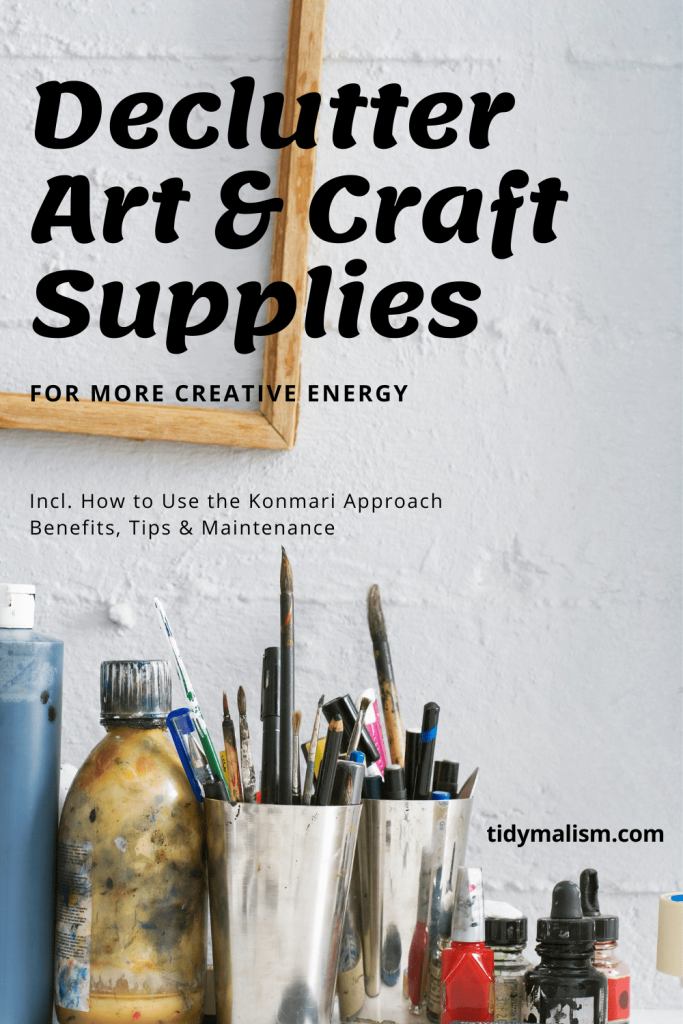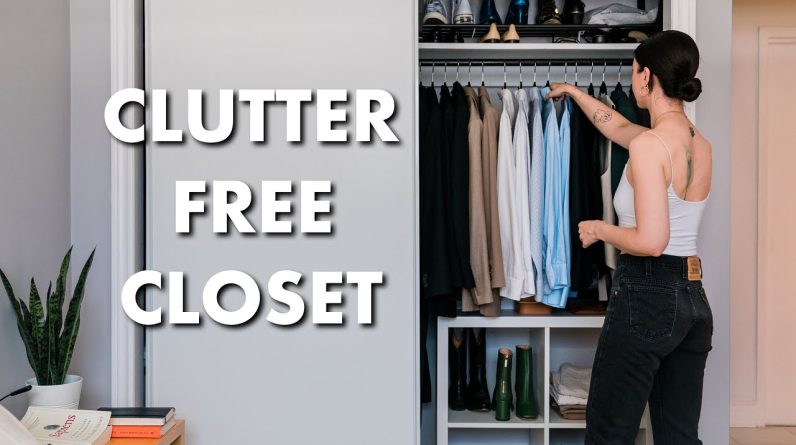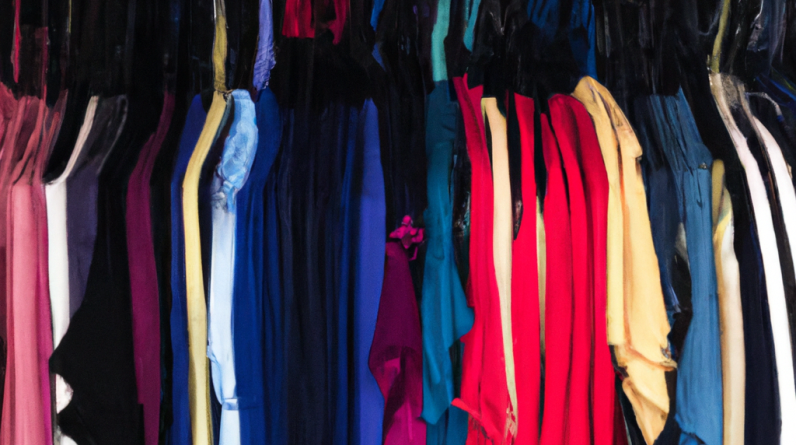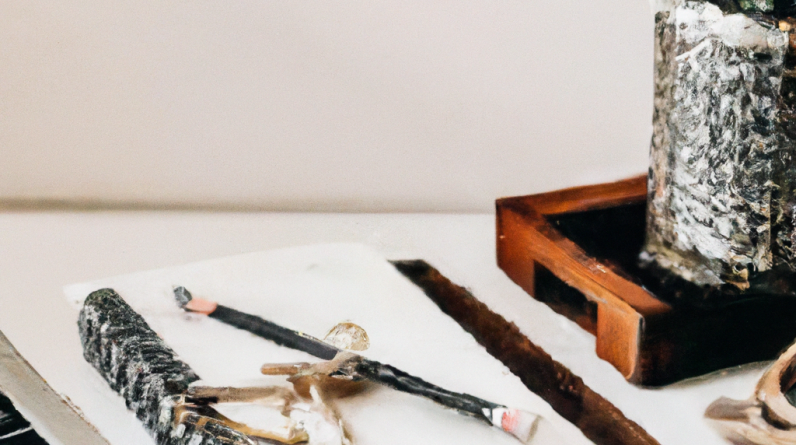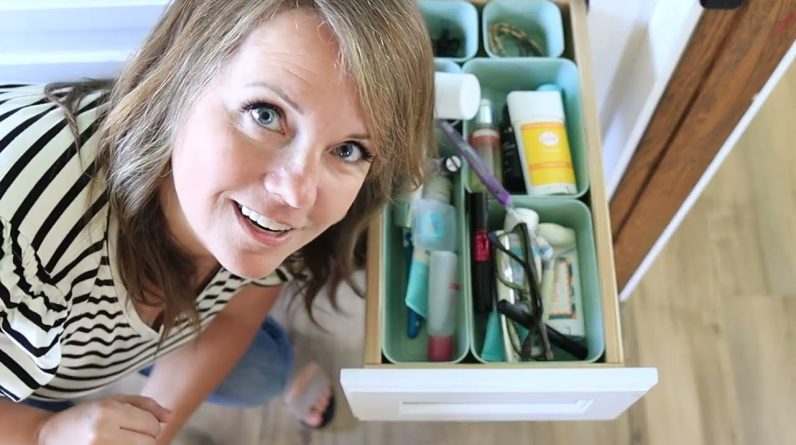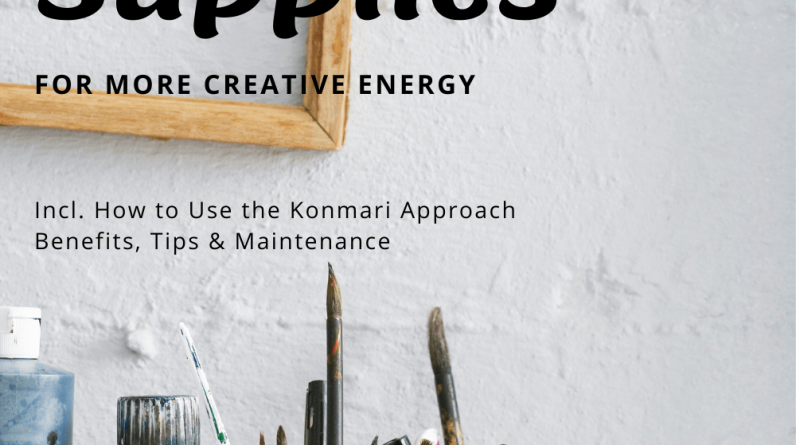
If you’re an artist or someone who loves to engage in creative activities, you know how easy it is for your art supplies to quickly take over your workspace. But what if there was a way to simplify and declutter your art supplies without sacrificing your creativity? In this article, we will explore the art of minimalism and how it can revolutionize your artistic process. Discover practical tips and techniques to declutter your art supplies, allowing you to focus on what truly matters – your art. Say goodbye to the overwhelming mess and hello to a streamlined and inspiring creative environment.
Table of Contents
The Art of Minimalism: Decluttering Your Art Supplies
Welcome to the world of minimalism, where less is more and simplicity reigns supreme. In this article, we will explore the art of decluttering your art supplies and how it can enhance your artistic practice. By evaluating your artistic needs and preferences, sorting and categorizing your art supplies, and identifying the essentials, you can create a functional and minimalist workspace that fosters focus, creativity, and efficiency. So grab your paintbrushes or pencils, and let us embark on this journey together!

Understanding the Benefits of Decluttering Your Art Supplies
Decluttering your art supplies goes beyond simply tidying up your workspace – it has a profound impact on your artistic mindset and productivity. By eliminating unnecessary clutter, you can experience enhanced focus and creativity, as a clean and organized space allows your mind to wander and explore without distractions. With a decluttered workspace, you’ll also find increased efficiency and productivity, as you spend less time searching for supplies and more time creating art. Furthermore, decluttering reduces stress and overwhelm by providing a sense of calm and clarity, enabling you to fully immerse yourself in your creative process. And as a bonus, decluttering your art supplies can help you save both time and money by only investing in the supplies you truly need.
Evaluating Your Artistic Needs and Preferences
Before diving into the decluttering process, take a moment to evaluate your artistic needs and preferences. Consider your artistic goals and the mediums you frequently work with. Are you a painter, a sketch artist, or a mixed-media creator? Understanding your preferred artistic style is key to identifying the art supplies that are essential to your practice. For example, a minimalist landscape artist may require basic paint colors, brushes, and canvases, while a detailed pen-and-ink artist may need a wide range of pens, papers, and shading tools.
Sorting and Categorizing Your Art Supplies
Now that you have a clear understanding of your artistic needs, it’s time to gather all your art supplies and embark on the sorting and categorizing process. Start by emptying all your art supplies onto a large table or surface. This step allows you to have a visual inventory of all your supplies and simplifies the sorting process. Next, create categories and subcategories based on the types of art supplies you have. For example, you may have categories such as paints, brushes, pencils, papers, and miscellaneous tools. Within each category, further subcategorize your supplies based on their specific properties or functions. This thorough categorization will help you make informed decisions during the decluttering process and make organizing your supplies much easier.
Identifying Essential Art Supplies
With your art supplies sorted and categorized, it’s time to determine which supplies are truly essential to your artistic practice. The key criterion for identifying essentials is frequency of use. Analyze your past projects and consider which supplies you reach for most often. These are likely to be your essentials. Additionally, consider investing in multi-purpose art supplies that can serve multiple mediums or techniques. This way, you minimize the number of supplies you need while maximizing their versatility. Lastly, pay close attention to the supplies that are specific to your preferred mediums. For instance, if watercolors are your go-to medium, prioritize watercolor paints, brushes, and appropriate paper over supplies that are not relevant to your practice.
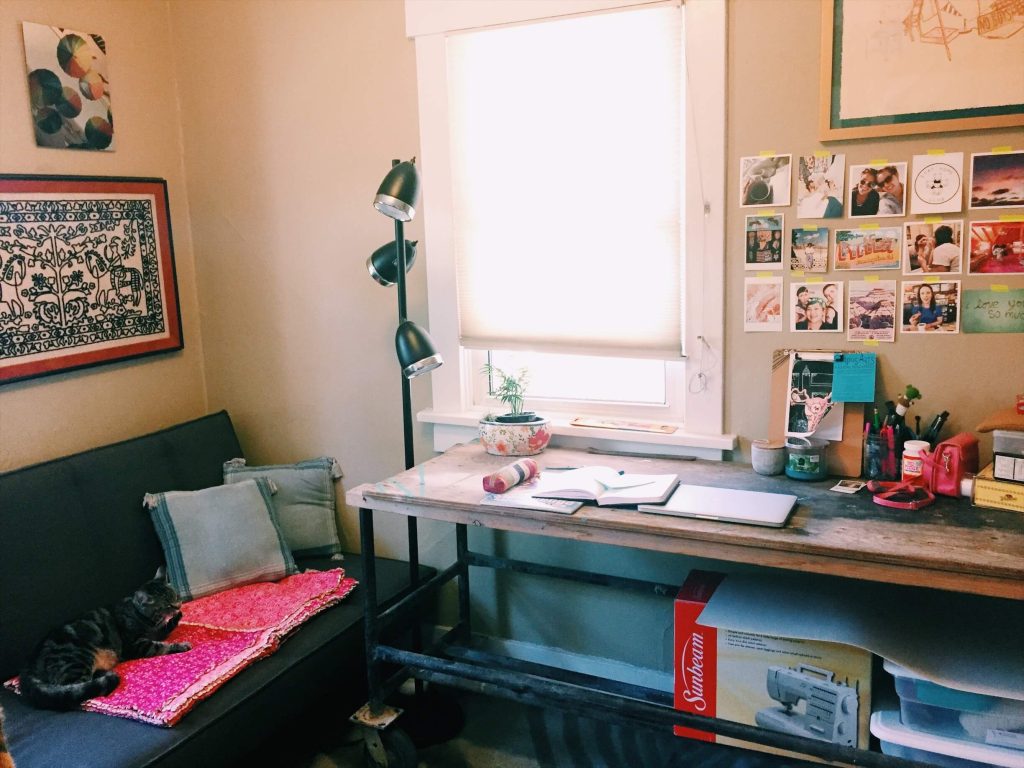
Letting Go of Unnecessary Art Supplies
Now comes the challenging but liberating part – letting go of unnecessary art supplies. Learning to prioritize and let go can be difficult, especially if you have sentimental attachments or a fear of “what if I need it in the future?” Remember that decluttering creates space for new ideas and opportunities. Start by recognizing supplies that have gone unused for a significant amount of time or those that are duplicates. Consider finding alternative uses for these supplies or donating them to aspiring artists who may benefit from them. Letting go not only declutters your physical space but also helps declutter your mind, allowing for a more focused and inspired creative process.
Organizing Your Art Supplies
Once you have identified your essential art supplies, it’s time to organize them in a way that is both functional and visually appealing. Start by selecting suitable storage solutions that cater to the specific needs of each category of supplies. For example, paints and brushes may be best stored in a caddy or a drawer organizer, while papers and sketchbooks can be neatly stacked on a shelf or placed in a portfolio case. Consider arranging your supplies by category, making it easy to locate and access what you need. Clear containers and labels are valuable tools in maintaining an organized space, as they allow for a quick visual assessment of your supplies and ensure everything has its designated place.
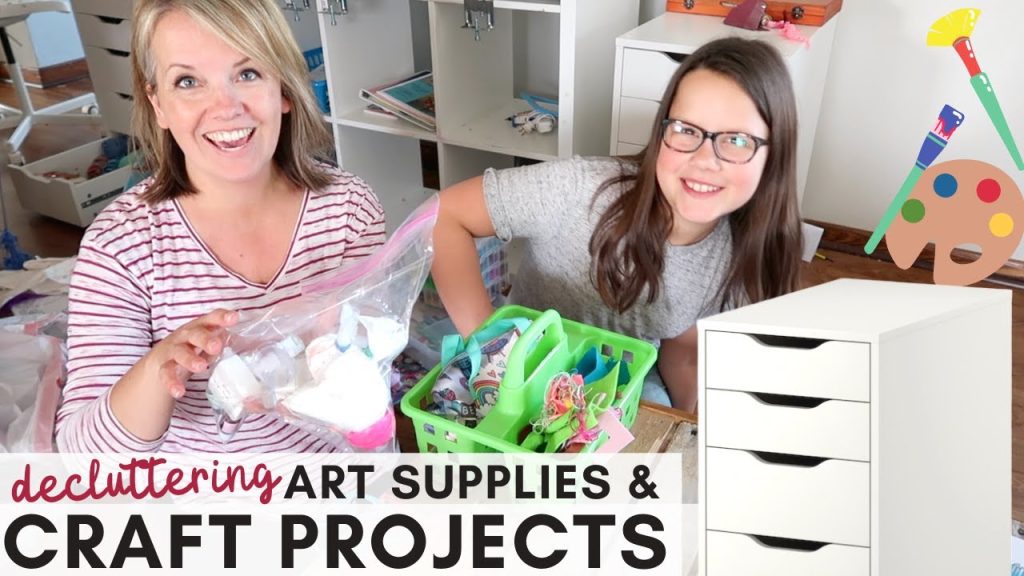
Creating a Functional and Minimalist Workspace
With your art supplies organized, it’s time to turn your attention to creating a functional and minimalist workspace that fosters your creativity. Start by simplifying and streamlining your workspace. Remove any unnecessary items or distractions from your immediate surroundings, such as excessive décor or unrelated clutter. Optimize ergonomics and comfort by ensuring your chair, desk, and lighting are conducive to long periods of work without causing strain or discomfort. Clear your workspace of anything that may draw away your focus and create a dedicated area for creating art. By designing a focused environment, you are setting the stage for a more immersive and productive artistic practice.
Exploring Digital Alternatives
In today’s digital age, it’s worth exploring the possibilities of digital art tools and platforms. Digital art offers a new dimension to artistic expression and can significantly reduce physical clutter. Discover digital art platforms and applications that cater to your preferred style and medium. Transitioning to digital art tools, such as tablets and styluses, can provide a seamless and versatile experience for artists. However, it’s important to weigh the pros and cons of analog versus digital art, as each has its unique characteristics and limitations. Experimentation is key to finding what works best for you and your artistic practice.
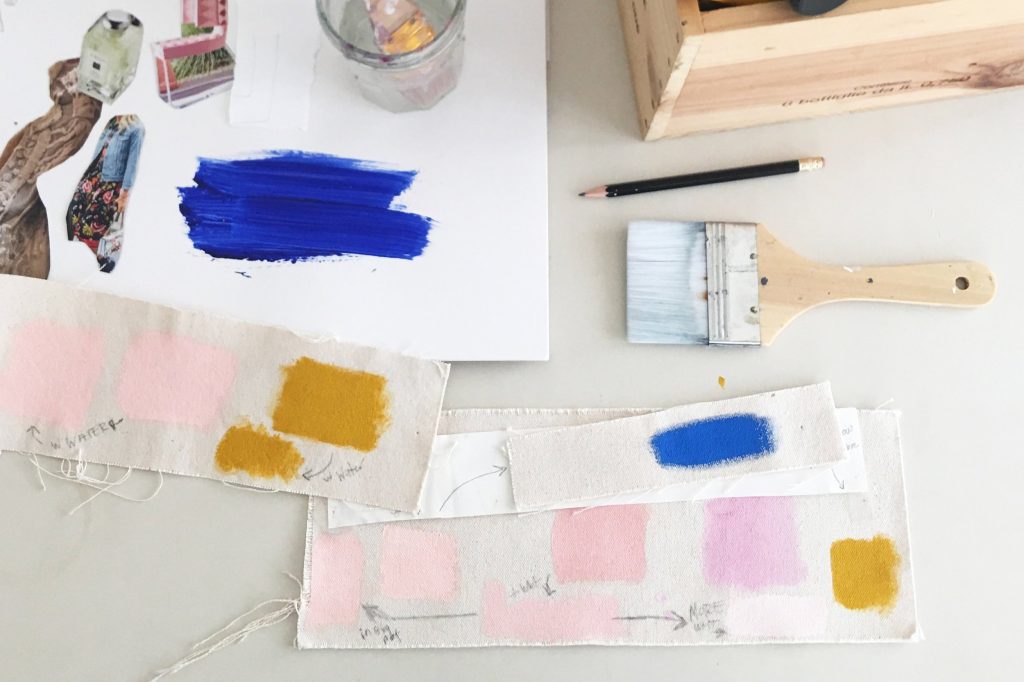
Implementing a Maintenance and Inventory System
To sustain a minimalist art practice, it’s essential to implement a maintenance and inventory system for your art supplies. Regularly revisit your supplies to reassess their relevance and condition. Avoid impulse purchases and instead focus on quality over quantity. Having a well-organized inventory will not only prevent unnecessary accumulation but also ensure that you have stock of your essential supplies. Consider creating a checklist or spreadsheet to track your supplies and note any replacements or replenishment needs. By monitoring your inventory, you can avoid last-minute surprises or frantic scavenging for missing supplies.
Sustaining Minimalism in Your Art Practice
Minimalism is an ongoing practice that requires intention and commitment. To sustain minimalism in your art practice, develop a mindset that embraces versatility and experimentation. Instead of constantly acquiring new supplies, challenge yourself to explore the full potential of the supplies you already have. Experiment with different techniques and mediums to discover new and exciting possibilities within your existing collection. By focusing on quality over quantity and being open to creative exploration, you can expand your artistic horizons while maintaining the simplicity and clarity that minimalism offers.
In conclusion, decluttering your art supplies is not just about tidying up your workspace – it’s about fostering focus, creativity, and efficiency. By understanding your artistic needs, sorting and categorizing your supplies, and identifying the essentials, you can create a functional and minimalist workspace that optimizes your artistic practice. Letting go of unnecessary supplies, organizing your essentials, and exploring digital alternatives are all steps toward creating a clutter-free environment that sparks inspiration. Remember, sustaining minimalism is an ongoing journey that requires dedication and mindfulness. So embrace minimalism in your art practice and watch your creativity flourish!
